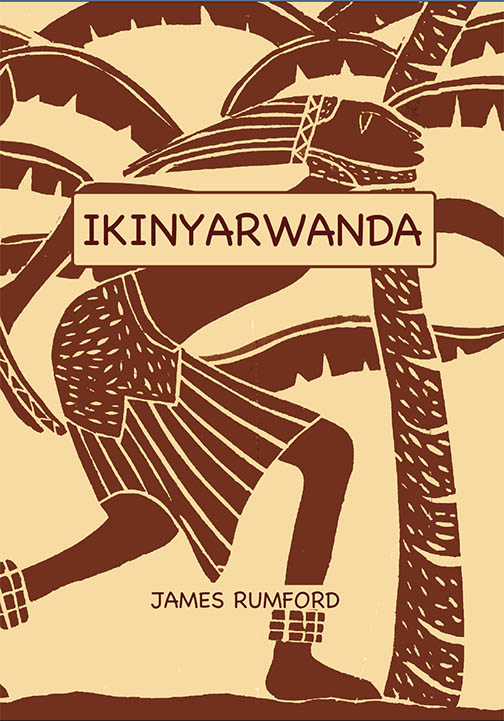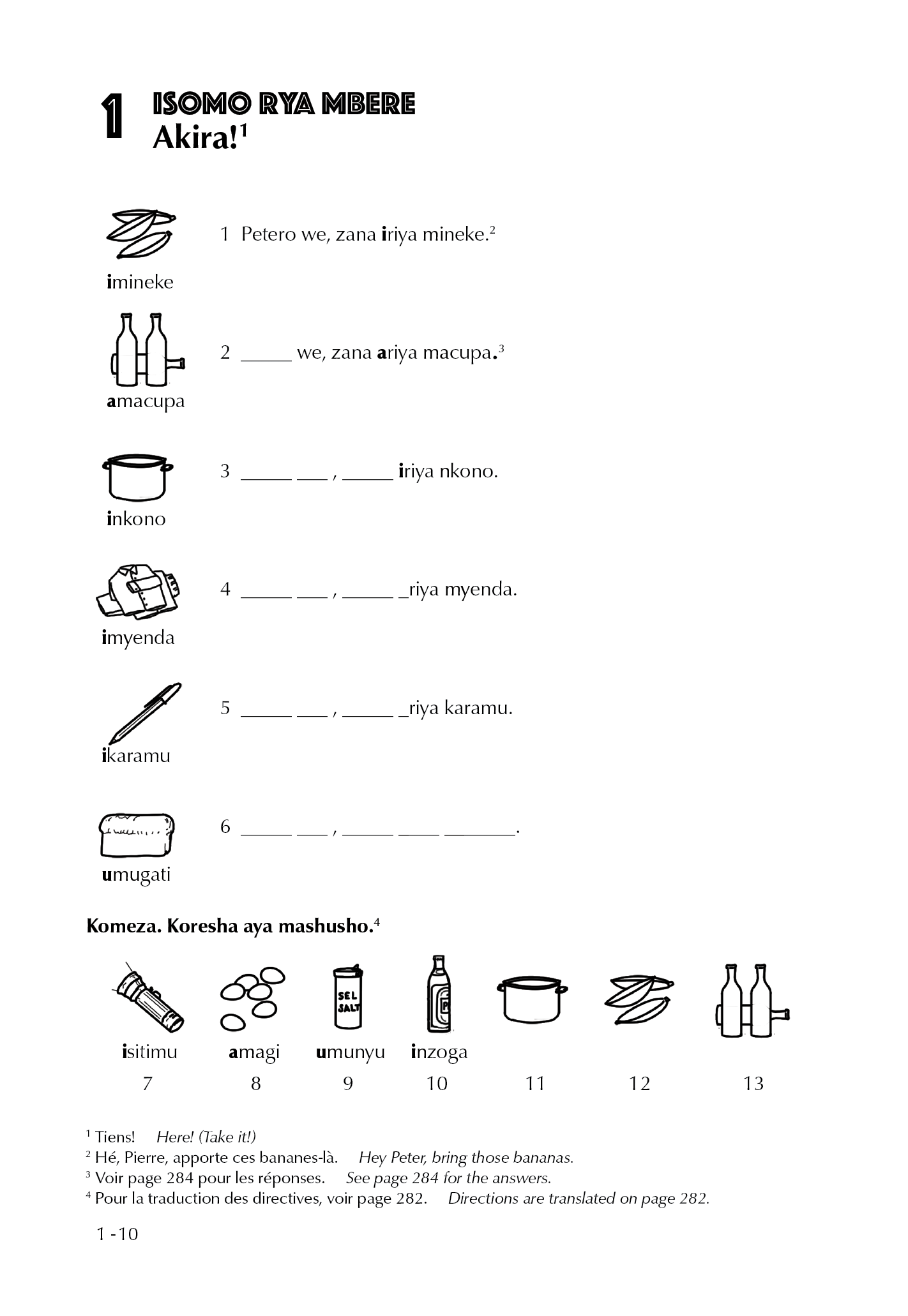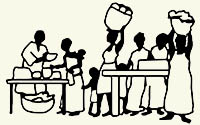Muraho! Hello! Bonjour!

To purchase a copy, click here.
Learn Kinyarwandan! Apprenez le kinyarwanda!
for English speakers :: pour francophones—voir ci-dessous
It is now forty years since this book was first published—its pages hammered out on a typewriter by my wife and myself, then printed at the Groupe Scolaire under the able supervision of Brother Michel and sewn together on my wife's treadle sewing machine and cut on an immense shearer brought up in the nineteen thirties from the Kenyan coast, first by train, then on the backs of laborers to Butare. The book was the creation of Robert Botne, a Peace Corps volunteer, and myself, a Fulbright lecturer, in 1978. When Bob left to continue his studies in the U.S., I finished the book, a task that took much of my non-teaching time for the next two years as I expanded the exercises and drew hundreds of pictures with a simple fountain pen. A former student Louis Rutaremara read every page and corrected the errors. Our goal was to create a book for newcomers to Rwanda, tasked with learning the language but faced with an often incomprehensible and difficult grammatical system. The book we wanted would present the rules in a way that would make them accessible to the learner. To this end, we created a book based on a simple principle: if the learner can be presented with facts about the language in a logical way and can deduce his or her own rules, then what is learned will stick and progress will be made. After forty years, I realize that there are many ways people learn a language and that the method in this book may not work for everyone. Nevertheless, what will work is this: if the learner will do the exercises, make use of the answer key, create a direct link between the pictures and the Kinyarwandan word and begin to examine the language critically, he or she will find the language "learnable" and hopefully enjoyable. Much has changed in the past forty years: the Rwandan government, the flag, the spelling system, the addition of English as a national language—almost everything. But it is hoped that through this book, brought back to life on a computer and printed and bound on an immense electronic machine, you will come to know the new Rwanda and learn to speak with her people.
Quarante ans se sont écoulés depuis la première édition de ce livre, dont les pages ont été tapées à coups bruyants par mon épouse et moi, ensuite imprimées au Groupe Scolaire sous la direction compétante de Frère Michel et cousues à la machine à pédale et taillées parfaitement, grâce à une immense guillotine apportée dans les années trente par train depuis la côte du Kenya et ensuite sur le dos des ouvriers jusqu'à Butare. Le livre fut la création de Robert Botne (volontaire du Corps de la Paix) et moi-même (professeur Fulbright), en 1978. Quand Bob est parti reprendre ses études aux États-Unis, j'ai achevé le livre, un travail de deux ans qui consommait la plupart de mon temps en dehors des heures d'enseignement. J'ai élargi les leçons et créé à l'aide d'un simple stylo-plume des centaines de petits desseins. Un ancien étudiant Rutaremara Louis a lu et corrigé chaque page. Notre projet visait à créer un livre pour les nouveaux arrivants qui voulaient apprendre le kinyarwanda mais qui se trouvaient face à une grammaire difficile à aborder et parfois incompréhensible. Le manuel que nous envisagions avait pour but l'étalage des règles grammaticales d'une mannière accessible. Le principe était simple: si l'on présente les faits de la langue d'une manière logique, l'apprenti peut en déduire ses propres règles et par conséquent faire des progrès. Après quarante ans, je me rends compte que chaque apprenti est différent et qu'il y a d'autres méthodes d'apprentissage aussi efficaces que celle présentée dans ce livre. Néanmoins, si l'apprenti fait les execices, se profite de la clé de correction, crée un lien directe entre les images et le mot kinyarwanda et commence à examiner la langue de façon critique, il trouvera la langue maîtrisable et, on espère, agréable. Bien des choses ont changé depuis 1980: le gouvernement Rwandais, le drapeau, l'addition de l'anglais comme langue nationale, l'orthographe—presque tout. Mais on espère que, à l'aide de ce manuel, ramené à la vie par l'ordinateur et imprimé et relié par une immense machine électronique, vous allez connaître le nouveau Rwanda et apprendre à parler avec son peuple.



